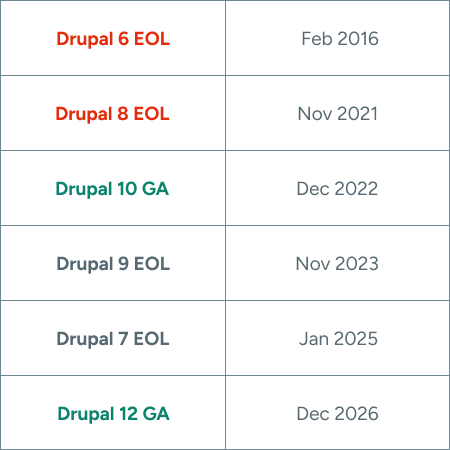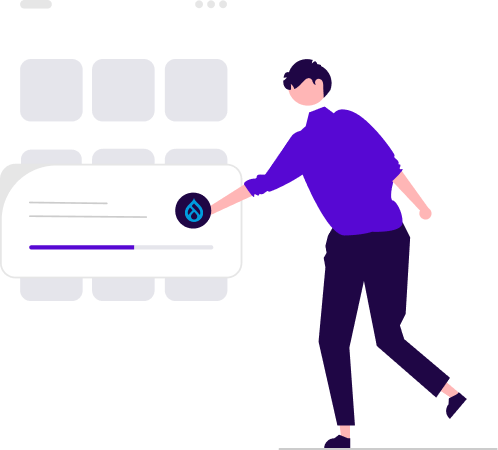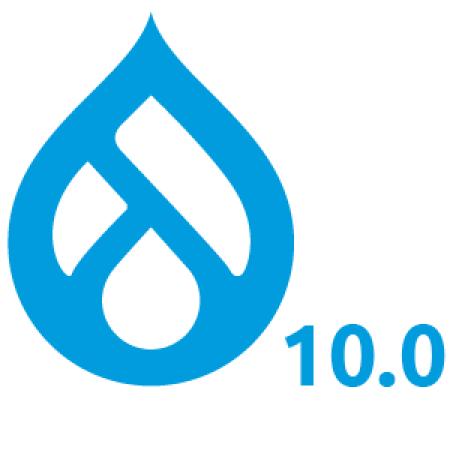Drupal 6 and Drupal 8 are long dead. And Drupal 7 and Drupal 9 are close.
Even though Drupal 7 was released in 2011, it still seems to be the most widely used version. Nearly half of all Drupal websites are on Drupal 7. So the kind folks with The Drupal Association are giving the 7’ers a little more time to migrate to Drupal 10.
Not sure what version of Drupal you’re using? Figure it out here, builtwith.com

GA: General Availability (e.g. starts)
EOL: End of Life
Get Started Now
And give yourself plenty of time to do a Drupal 10 migration right.
Why Upgrade to Drupal 10?

Support
When technology reaches its end of life, the development firm no longer provides support for the product.
Security
Hackers know how to exploit vulnerabilities in outdated software.
Features
Add more features to your website that you never knew you needed
Media
Supports more media types, more languages, and makes embedding videos easier.
Mobile-Friendly
Improved mobile experience for users and administrators.
Experience
Drupal 10 has an easier interface for your administrators.
Working with Atlantic BT, you have options.
Upgrade to Drupal 10
Your website’s design, content, data and functionality will be migrated from your current version to Drupal 10.
Upgrade & Redesign
We’ll refresh your website with a new design and migrate your current data and functionality to Drupal 10.
New CMS & Redesign
If you’ve been considering a new CMS all together, we can do that too!

We’ve been doing this for 25 years. Our process is solid.
When migrating from one version of Drupal to the next, we begin by evaluating the 3rd party modules you’re currently using. We’re analyzing quality, security, and performance to determine if the current modules can provide the appropriate stability for your website as we make the upgrades.
If your website has good modules already in place, then we’ll be able to jump right in – expediting the timeline for your project.
Drupal development is Atlantic BT’s expertise! Because we’ve been doing this for so long, we have our own Drupal baseline already perfected. A jumpstart on development of configurations, security and performance means our wealth of experience can save your company time and money.
How else can we help you feel confident that Atlantic BT is your next website partner?
- First off, Drupal backs us up. Here’s a link to our profile on Drupal’s website.
- And you can learn more about how we’re very well known for developing technology right (the first time!!!) by reviewing Our Process.
- Then visit Our Work to see some recognizable names of other companies we work with. That always makes us feel confident when evaluating vendors.
If you’re still just trying to figure all this migration stuff out, education is key! Do your research. The more you know, the more confident you’ll feel making the best, cost conscious decision for your organization.
We share many of the things we’ve learned during our 25 years of building websites here on our blog. A few relevant topics include – addressing concerns about Drupal migrations, choosing the best content editor for Drupal, getting what you need from your CMS, and learning why your CMS matters.
Frequently Asked Questions
Who owns Drupal?
The Drupal Association, a non-profit organization that fosters and supports the Drupal software project. The association uses its network and funds for new projects and initiatives to help educate and encourage the growth of Drupal software. Drupal is an open-source project and therefore not subject to licensing fees. You can also change it however you want, so long as you do not try to change its “open-source” nature.
What does EOL mean?
EOL is an abbreviation for “End of Life” and refers to the point in which software will no longer be supported by its developers. Once software has reached its EOL, no additional bug fixes, security updates, or new features will be available from its original creators.
When is EOL for Drupal 7?
January 5, 2025. The public service announcement regarding Drupal 7’s end of life can be viewed here.
Is it really that bad if I continue operating my website with Drupal 7?
Yes. Regular updates and maintenance are essential for the smooth and secure functioning of your Drupal website. Neglecting these tasks can leave the core framework and modules vulnerable to various security threats. And, without support, any bugs that may arise will not be automatically fixed.
What version of Drupal should I migrate to?
Drupal 10. Released in December of 2022, Drupal 10 takes advantage of more modern web capabilities. It represents a major leap forward architecturally in performance, developer experience, security and mobile-readiness compared to Drupal 7.
Why not Drupal 9?
Drupal 9’s end of life is quickly approaching as well. It is set to reach EOL in November 2023, when Symfony 4 reaches its end of life. Symfony is a back-end framework designed for building scalable PHP web applications. Since Drupal 9 uses a lot of Symfony 4 code, its EOL will follow suit with Symfony 4.
What improvements does Drupal 10 deliver?
- Modern Architecture. It is built on top of the latest Symfony 6 components and is packed with modern features.
- More Interactive User Interface. Drupal 10 adopts more modern JavaScript tools like React, Vue, Webpack instead of relying on jQuery.
- Improved Accessibility. The newest version of Drupal uses WCAG 2.1 compliance, compared to basic WCAG 2.0 compliance in older versions.
- Headless Capabilities. Drupal 10 can utilize the REST API and decoupled architecture options to facilitate headless CMS implementations.
- Improved Testing Capabilities. PHPUnit, NightwatchJS and other modern testing approaches are better supported in Drupal 10.
What is the difference between upgrading and migrating to Drupal 10?
Drupal 8 or 9 to Drupal 10 can be considered an upgrade. Since Drupal 8, 9 and 10 have such similar architectures, it is possible to update your codebase without having to rebuild or migrate content between versions.
Going from Drupal 7 to Drupal 10 would be considered more of a migration project as the process would be more involved, likely requiring mapping over or rebuilding content.
How complex is a migration to Drupal 10 from older versions?
Drupal 7 will have had a 14 year run by the time it reaches its EOL date in January of 2025. Thus, migrating from Drupal 7 to Drupal 10 will be highly complex. A migration from Drupal 8 would be considered medium complexity and Drupal 9 less complex. Overall, every website is different and the complexity of the migration process will vary from site to site.
When should I move to Drupal 10?
Drupal recommends migrating as soon as possible to ensure that your site remains secure and up-to-date with the latest features and technologies.
Where can I find Drupal 10 developers to help with a website relaunch?
Right here! Atlantic BT provides a range of Drupal web services that encompass the migration of content and configuration, media files, image styles, user accounts, custom themes and modules, as well as integration with third-party data. Additionally, we provide round-the-clock monitoring, security updates, and bug fixes to guarantee seamless website performance.


